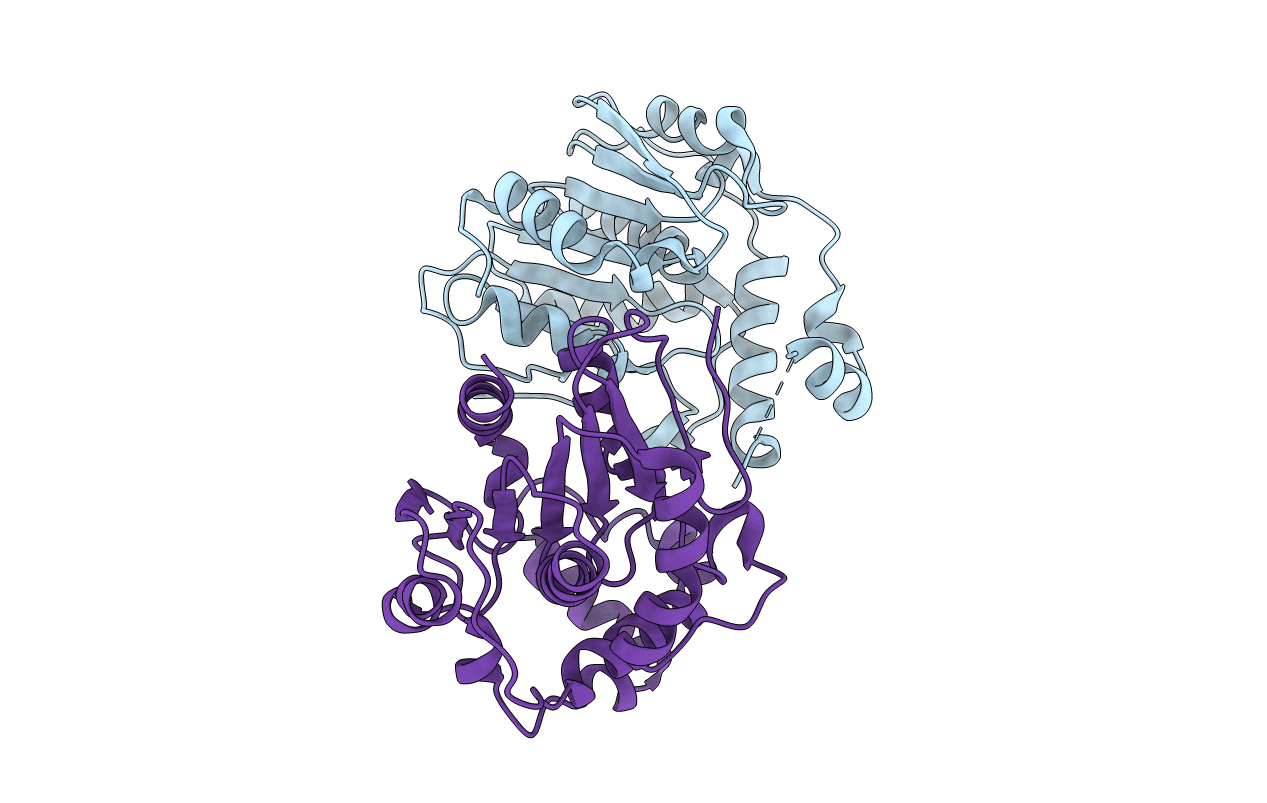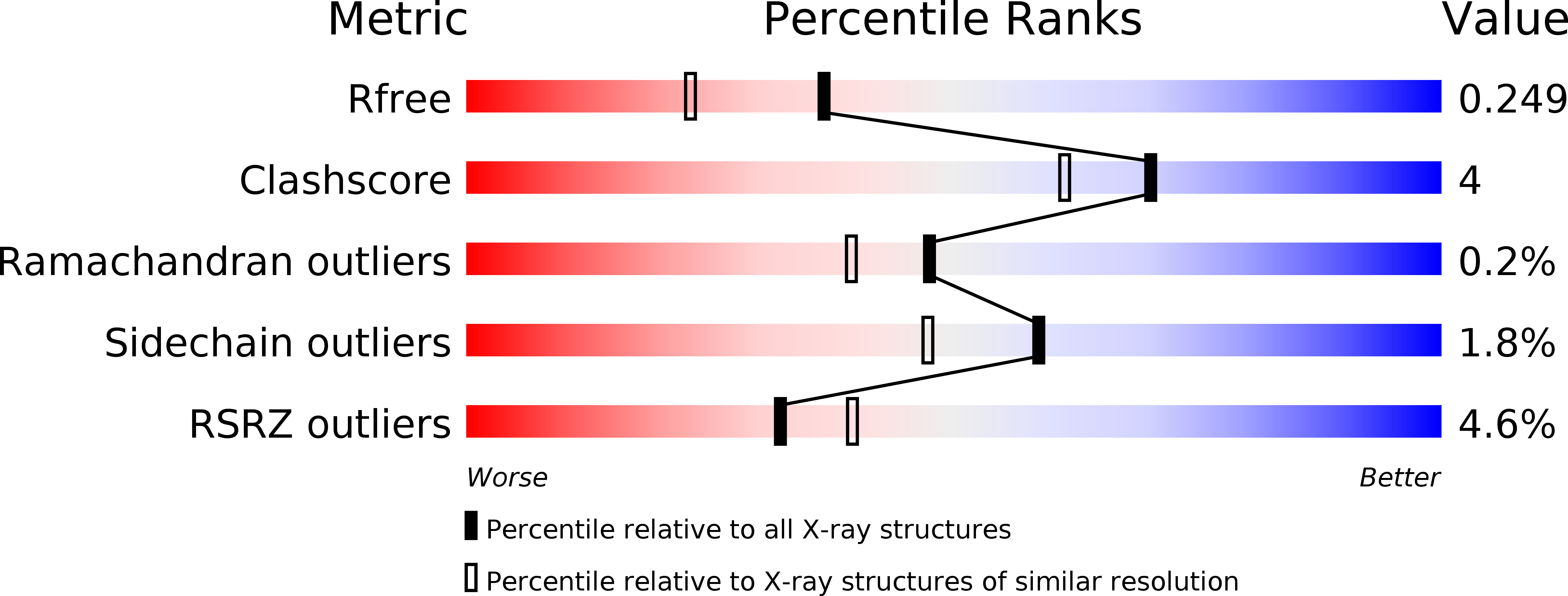
Deposition Date
2019-12-17
Release Date
2020-05-06
Last Version Date
2023-10-11
Entry Detail
PDB ID:
6VAP
Keywords:
Title:
Structure of the type II thioesterase BorB from the borrelidin biosynthetic cluster
Biological Source:
Source Organism:
Streptomyces sp. WAC02707 (Taxon ID: 2487417)
Host Organism:
Method Details:
Experimental Method:
Resolution:
1.93 Å
R-Value Free:
0.24
R-Value Work:
0.20
R-Value Observed:
0.21
Space Group:
C 2 2 21


